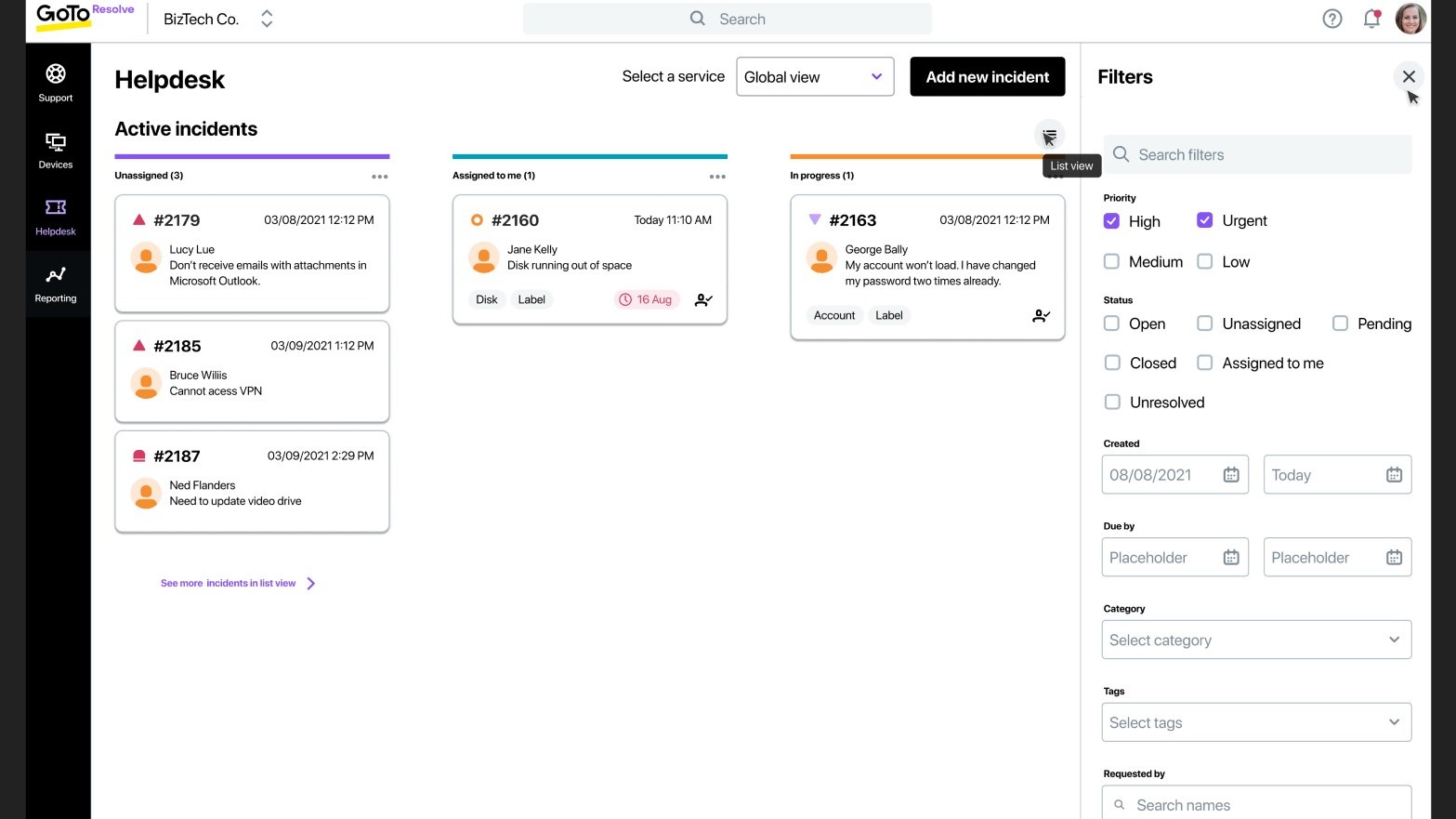How to turn remote working into an IT timesaver
The right tools can make all the difference when it comes to supporting remote workers

When it comes to remote working, IT staff have been ahead of the curve for years, but recent events have caused the practice to explode in popularity. Despite this, however, many organisations have been reluctant to fully embrace it, and for small-business IT departments in particular, the prospect of ensuring that a remote workforce remains properly connected and supported can be a daunting one.
In this advertorial, we’ll look at how, rather than being a burden to IT staff, a hybrid workforce can actually help accelerate support workflows and reduce demands on IT’s time. We’ll examine how deployment of remote-assistance tools can increase overall efficiency for SMB IT teams, as well as familiarising staff with self-service problem solving, positioning GoTo Resolve as a key enabler of remote-working strategies.
In a world of cloud computing and SaaS procurement models, giving employees a robust and forward-looking IT experience is no longer restricted only to big organisations who can afford to shell out for expensive software licences, server infrastructure and peripherals. In fact, a strong technology strategy has become an essential part of building a business, and IT functions power day-to-day operations in organisations of every size.
Despite this, however, IT is frequently one of the most under-resourced elements within small companies, with less budget and personnel than they need to operate at peak effectiveness. The smallest businesses may not have a dedicated IT department at all, instead making do with a single support agent, or even a combined IT and facilities management operative.
With this in mind, it’s easy to see how small organisations may feel that some aspects of modern technology are out of their reach, requiring more time, investment and resources to manage than they can reasonably spare. Remote working is a key example of this; while it’s been highly popular among IT professionals for many years, the idea of supporting the technology needs of a remote or hybrid workforce can be daunting for small businesses.
In order to leverage the full benefits of remote working, organisations must deploy a broad range of new tools - such as video conferencing, collaboration tools and cloud storage - that they may not previously have had much experience with. Many small businesses will have grappled with these platforms for the first time during the pandemic, and while the process of rolling them out on short notice may have been a stressful one, the implementation of hybrid work tools doesn’t need to adversely impact IT workers’ time.
In fact, remote working can actually make it easier for IT staff to do their jobs. Not only can the same platforms and programs that workers need to be productive from home also be used to speed up IT support workflows, the cultural and process changes that they can bring with them are also an excellent way to reduce the workloads of technical support operatives.

Automation destination
For starters, it doesn’t hurt that the cloud-based software ecosystems commonly used to support hybrid working are often much easier to deploy and administer than traditional on-prem software packages. User accounts can quickly be added, removed or modified, granular access permissions can be set with company-wide policies, and single sign-on tools allow employees to easily access all of the services they need without having to remember a laundry list of complex login details.
Addressing these issues would normally be a large and time-consuming part of an IT department’s workload, but SaaS platforms make these tasks significantly faster. Additionally, while the remote collaboration and productivity tools needed to support a hybrid workforce will need to be set up and maintained by a company’s IT function, rolling out a modern remote support platform alongside them allows both elements to work together - resulting in much more streamlined workflows for a wide variety of IT tasks.
GoTo Resolve, for instance, includes remote IT automation tools, allowing agents to use intuitive yet rich decision trees to complete a range of operations including patch installation, Powershell script execution and registry modifications. This means that when software updates need to be installed, for example, rather than sending out an email to all employees and waiting for them to manually apply it, support staff can instead automatically roll them out on a proactive schedule.
In addition to automating tedious tasks such as manually ensuring that all employee devices are up-to-date with the most recent software versions, this functionality can also be used to automatically provision new employee devices with all the necessary software and group policy settings, and even to create custom workflows for things like common troubleshooting steps.
For small-business IT operatives that are used to manually visiting workers’ desks to cross-check their software and device status, this can be an enormous timesaver - and similar efficiency gains can be achieved in other areas, too. Rather than dealing with requests for assistance one at a time, remote support tools allow agents to handle multiple sessions at once from the comfort of their workstation.

Ticket to ride
This is especially powerful when combined with a structured ticketing system, enabling support staff to keep track of issues as they arise and sort them in order of how business critical they may be. These ticketing systems can be run via traditional email systems or, with newer remote support suites like GoTo Resolve, integrated into collaboration platforms like Slack or Microsoft Teams via a responsive conversational interface. This makes it easy for workers to log issues in the proper way - rather than reaching out to IT directly, which can be both stressful and inefficient if there are more pressing issues to attend to.
Implementing a clearly defined ticketing policy to resolve tech support issues helps encourage staff to adopt a more ordered approach to their interactions with IT, but it should also be supplemented with comprehensive documentation and user guides for all the major systems and technologies that employees rely on.
Having a robust knowledge-base that staff can fall back on as a first port of call will allow them to become more self-sufficient, and enable them to solve a much greater variety of basic issues themselves without needing direct assistance from support staff. This frees up the IT department’s time to work on more complex issues, as well as to explore projects which can add additional value to the business as a whole.
However, while some simple problems can be addressed without having IT fix them, there will always be situations which are beyond the abilities of even the most technically minded novice, and the prospect of not being able to physically visit a worker in technical distress can be concerning for some IT departments. How, for instance, do you assist a remote employee who can’t connect to the internet?

In cases such as this, the ability to launch support sessions across a range of devices is invaluable. In the event that a colleague’s laptop connection fails, support workers can use GoTo Resolve to initiate a session on their mobile device and walk them through getting it back up and running. They can even use the platform’s zero-download camera sharing functionality to physically examine the offending hardware for signs of loose connections or damaged equipment.
Remote working can be a fantastic tool for empowering employees to be more productive from wherever they are - and that applies just as much to IT and support staff as it does to workers in other areas of the business. Although it may involve getting to grips with a few new technologies, deploying hybrid working tools and the support platforms to effectively manage them can drive significant efficiency improvements throughout an organisation, including its IT department.
For small businesses that want to build out their remote working strategy in a scalable and sustainable way, rolling out a modern cloud-enabled remote assistance platform such as GoTo Resolve can help them service and support a hybrid workforce without the headaches.
Sign up to the TechRadar Pro newsletter to get all the top news, opinion, features and guidance your business needs to succeed!